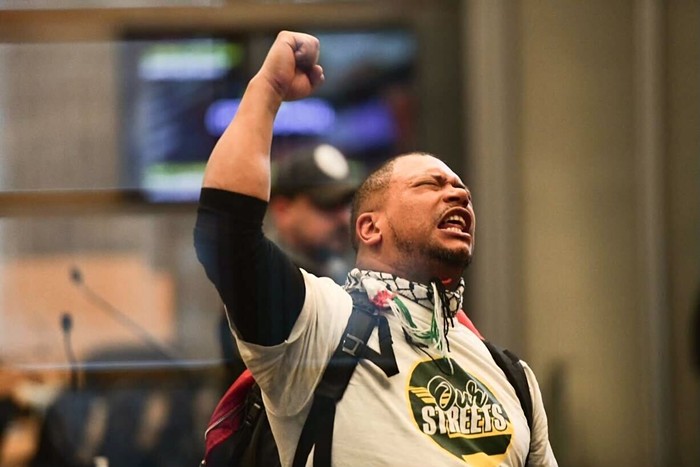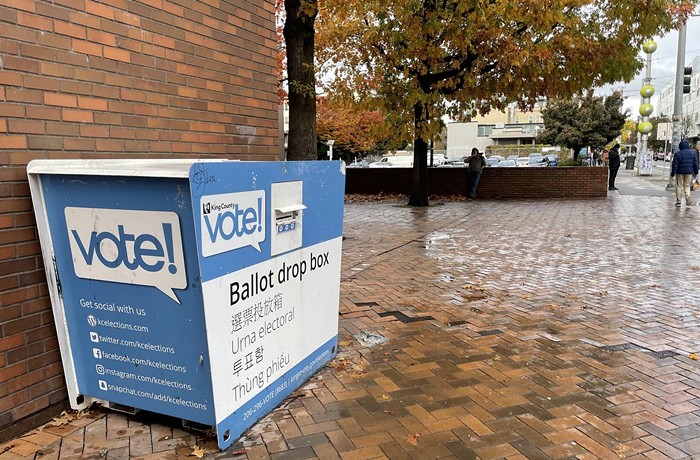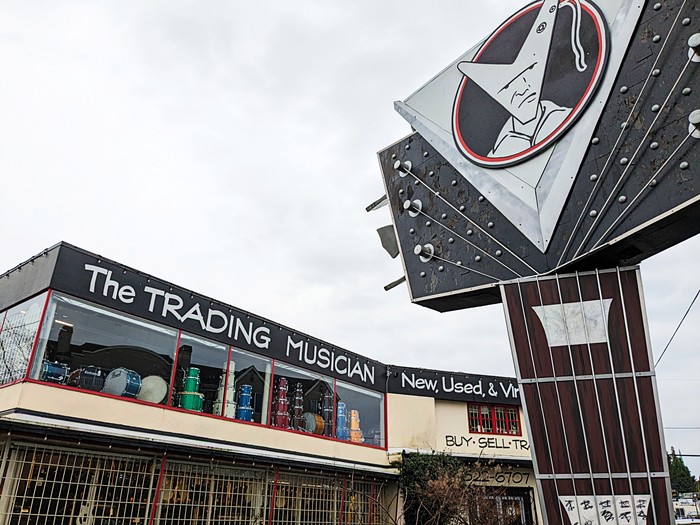
- Protesters held up signs saying "Address Racism Now" and "Without Community Input, Plans Can't Go On." The vote didn't go the way they wanted.
For City Council Member Mike O'Brien, how to vote on a series of seemingly innocuous land use code amendments on Tuesday at City Hall turned into a decision fraught with racial angst.
"I'm struggling with this, for sure," he blurted out on the phone after the vote, in between a long pause and a heavy sigh.
The land use code amendments were requested by King County in order to facilitate the building of a new "Children and Family Justice Center" on 12th and Alder in the Central District. Opponents call it a "new youth jail." They point out that young black men have been disproportionately incarcerated inside. County officials freely acknowledge this and say they will do better.
The two groups depart from one another on the solution: The anti-jail coalition wants the county to build a community center with no jail component; the county insists it must build detention beds into the new facility.
Full disclosure, per usual: I volunteer inside the current jail every Tuesday. And in a new development, I've learned that No New Youth Jail campaigners included my name as a supporter in a hard copy of a letter delivered to the King County Council earlier this year. The letter is a good one, but there are two problems: (1) I don't know how my name ended up on it (there's no signature), and (2) the letter doesn't sufficiently explain what the county should do, given that state law requires it to operate a juvenile detention facility. You can read the electronic version, where my name is not listed, here.
At City Hall, O'Brien said the county deserved "kudos" for dramatically reducing the sheer number of children held in the jail, even as the racial disparity of those locked up inside has increased. But he rebuked the county officials seated across the table for not adequately involving segments of the local community in the development of a replacement facility.
"Rebuilding the youth detention and courthouse facilities is a project that has been in the works for years," O'Brien said in a statement. "So it is a failure of our collective leadership that today, as the council’s land use committee votes on a small land use change regarding this facility, that we are hearing from young black men, their families, their community, and their allies that they want to be part of this conversation but have not yet had a chance to participate in a meaningful way to date."
During the hearing, city council member Tim Burgess lamented "the fact that we're even having this conversation," echoing O'Brien. All the academic literature shows, he said, that incarcerating children does not serve them well, but at the same time, some violent offenders must be jailed to protect the public. "I wish we could roll back 30, 40, 50 years... and do all those things right, so that we wouldn't be here."
Only Council Member Nick Licata, however, out of the three white men seated at the table, offered a concrete, immediate solution instead of hand-wringing about missed opportunities to address institutional racism. Construction of the new jail is still years away, he said. Why not pause and actually carry out a racial impact assessment?
After all, as the anti-jail coalition has pointed out, the county (named for Martin Luther King Jr., needless to say) enacted a fairness and equity framework in 2010 as part of its strategic plan, committing to the "development of analytical tools to support all branches' departments and agencies in identifying the equity impacts of policies and decisions and ways in which to amplify positive impacts and mitigate negative impacts."
Berkeley's Haas Institute or Glenn Harris, who ran Seattle's acclaimed Race and Social Justice Initiative for years and now directs the New-York based Center for Social Inclusion, could be tapped to carry one out in six to ten weeks, Licata argued.
But the King County officials—Bellevue mayor Claudia Balducci and buildings manager Kathy Brown—insisted that any delay would be untenable because the county is in the middle of the procurement process for a design builder. Brown asserted that any delay would cost $500,000 per month. Licata, disbelieving, shot back that she was confused and had her numbers wrong. Balducci responded flatly that the county is unwilling to put the project on hold.
Licata said the committee shouldn't proceed with a vote until a racial impact assessment has been completed. But O'Brien called for a vote anyway. Licata abstained. O'Brien and Burgess voted in favor and it passed 2-0. Someone from the crowd yelled out, "Thank you, Nick."
Before the council meeting, the city and county drafted a joint agreement (PDF) to address racial disproportionality in the juvenile justice system through the formation of an ad-hoc working group. Additionally, the two governments would work together to reduce suspensions in schools and jailings of juveniles who simply fail to appear at a court date.
O'Brien sent me an e-mail saying the document represents a promise from the county to carry out a racial impact assessment. But today, Chad Lewis, a county spokesman, allowed only that the county is "open to the idea."
"I'm somewhat comfortable [with this agreement]," O'Brien told me over the phone after the vote. "I believe we can maintain leverage with the county to hold them accountable and ourselves accountable."
I asked the council member why, after condemning the county for failing to adequately consult with racial minorities, he didn't insist on a racial impact assessment before proceeding with the project.
There was another pause. "I don't have an answer for you, Ansel... I'm not going to tell you I know that that's right. But that's where I end up today. I believe I'm right."
This post has been updated since its original publication.


















